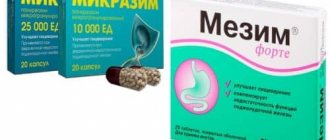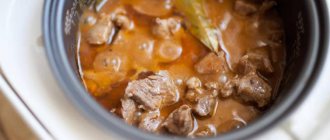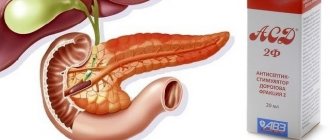author: V. M. Luft, Doctor of Medical Sciences, Professor, Head of the Clinical Nutrition Laboratory of the St. Petersburg Research Institute of Emergency Medicine named after. I. I. Dzhanelidze
In this article we will look at what is recommended by the staff of the clinical nutrition laboratory of the St. Petersburg Research Institute of Emergency Medicine named after. I. I. Dzhanelidze protocol for nutritional support of patients with acute pancreatitis.
Therapeutic nutrition is an integral component of the treatment process, the main task of which is to satisfy the physiological needs of the human body for nutrients and energy, taking into account the mechanisms of disease development, the characteristics of the course of the main and concomitant diseases. Medical nutrition, implemented through the artificial supply of substrate to patients, acquires particular relevance in various emergency conditions, in which nutritional support should be an obligatory component of their basic treatment.
Let's start with a definition. Acute pancreatitis (AP)
Acute pancreatitis (AP) is an acute autolytic lesion of the pancreas, manifested by the development of edema of the organ (edematous interstitial pancreatitis) or primary aseptic pancreatic necrosis (destructive or necrotizing pancreatitis) with the subsequent development of both local and systemic inflammatory reactions, as well as various involvement of other regional tissues or distant body systems with a high risk of secondary purulent infection.
Currently, acute pancreatitis represents a very significant social problem. For example, according to data from hospitals in St. Petersburg, OP ranks first in the overall structure of patients with acute surgical diseases of the abdominal organs, reaching 42% of all hospitalized patients. In the general structure of surgical patients admitted to the Research Institute of Emergency Medicine named after. I. I. Dzhanelidze in the period from 2002 to 2006, OP also ranks first and has a steady upward trend. The medical and social significance of AP is determined by the relatively frequent (15–20%) severe course of the disease with the development of life-threatening complications, the need for long-term inpatient expensive treatment of patients, long-term disability, frequent chronicity of the process (up to 60–65%), early disability, as well as the high mortality rate of patients with severe disease (25–30%).
The basis of the clinical and morphological classification of acute pancreatitis is the form of the disease, intra-abdominal and systemic complications, taking into account the prevalence of necrotic lesions of the pancreas and various parts of the retroperitoneal tissue, the phase development of the inflammatory-necrotic process from abacterial to infected.
Forms of the disease
- Edematous (interstitial) pancreatitis.
- Sterile pancreatic necrosis:
- according to the extent of the lesion: limited and widespread;
- by the nature of the lesion: fatty, hemorrhagic, mixed.
- Infected pancreatic necrosis.
Local complications
In the pre-infectious phase:
- Parapancreatic infiltrate (omentobursitis, volumetric fluid formations of retroperitoneal localization).
- Necrotic (aseptic) phlegmon of retroperitoneal tissue (parapancreatic, paracolal, perinephric, pelvic, etc.).
- Peritonitis: enzymatic (abacterial).
- Pseudocyst (sterile).
- Arrosive bleeding (intra-abdominal and in the gastrointestinal tract).
During the infection phase:
- Septic phlegmon of the retroperitoneal tissue: parapancreatic, paracolar, paranephric, pelvic.
- Pancreatogenic abscess (retroperitoneal fatty spaces or abdominal cavity).
- Fibrinous-purulent peritonitis (local, widespread).
- Infected pseudocyst.
- Internal and external pancreatic, gastric and intestinal fistulas.
- Arrosive bleeding (intra-abdominal and in the gastrointestinal tract).
Systemic complications
- Pancreatogenic shock in sterile pancreatic necrosis and its intra-abdominal complications.
- Septic (infectious-toxic) shock in infected pancreatic necrosis and its intra-abdominal complications.
- Multiple organ failure in both sterile and infected pancreatic necrosis and their complications.
As is known, in acute pancreatitis there are certain sequentially developing phases:
Phase I is enzymatic (the first 3–7 days of the disease), which is characterized by the development of acute interstitial inflammation of the pancreas or the formation of pancreatic necrosis of varying severity and prevalence, enzymatic endotoxicosis, and in some patients, multiple organ failure. Based on the severity of clinical and laboratory disorders arising from acute pancreatitis, three clinical variants of its course are distinguished: mild, moderate and severe.
Mild acute pancreatitis is characterized by minimal manifestations of organ dysfunction, the absence of endogenous intoxication, and a rapid positive effect during conservative therapy. The morphological substrate of this clinical form is interstitial (edematous) pancreatitis.
Want more new information on nutrition issues? Subscribe to the informational and practical magazine “Practical Dietetics”!
SUBSCRIBE
Severe acute pancreatitis is manifested by severe endogenous intoxication, exicosis, multiple organ disorders, sometimes pancreatogenic shock, systemic inflammatory response syndrome, respiratory, renal, intestinal failure, the development of coagulopathy and metabolic dysfunction, lack of improvement or a tendency to worsen the patient's condition against the background of complex conservative therapy. The morphological substrate of this clinical form is widespread (large focal or total-subtotal) sterile or infected necrotizing pancreatitis and its complications.
Acute pancreatitis of moderate severity occupies an intermediate position between the forms described above and is characterized by a mildly expressed systemic inflammatory reaction syndrome, respiratory, renal or intestinal failure, moderate endotoxicosis, improvement of the patient's condition against the background of complex conservative therapy with preservation of local symptoms of the disease in the first two days. The morphological substrate of this clinical form is small-focal, moderately widespread necrotizing pancreatitis.
Phase II is reactive (2nd week of the disease), characterized by the body’s reaction to the formed foci of necrosis (both in the pancreas and in the parapancreatic tissue).
Phase III - melting and sequestration (starts from the 3rd week of the disease, can last several months). Sequesters in the pancreas and retroperitoneal tissue begin to form from the 14th day from the onset of the disease. There are two possible options for the course of this phase:
- aseptic melting and sequestration (sterile necrotizing pancreatitis) with the formation of postnecrotic cysts, sometimes fistulas;
- septic melting and sequestration (infected necrotizing pancreatitis) with further development of local and systemic (often sepsis) complications.
The tactics of nutritional support for patients with acute pancreatitis is determined by the type of pathomorphological changes in the pancreas (edematous, necrotizing), the stage of the disease, the severity of pathophysiological disorders and the characteristics of the clinical course of acute pancreatitis, as well as options for their surgical treatment.
The protocol for nutritional support of patients with acute pancreatitis is presented by V. M. Luft, MD, Professor, Head of the Clinical Nutrition Laboratory of the St. Petersburg Research Institute of Emergency Medicine named after. I. I. Dzhanelidze, and researcher at the specified laboratory, Ph.D. A. V. Lapitsky.
NB One of the most important points in intensive therapy of acute pancreatitis in the enzymatic phase of the disease is the creation of functional rest and suppression of exocrine activity of the pancreas. This involves temporarily prohibiting oral intake of fluids and food until signs of systemic “evasion” of pancreatic enzymes are completely eliminated. In this case, normovolemic correction of water-electrolyte balance during this period is carried out parenterally.
It has now been shown that in mild cases of acute pancreatitis (edematous form) and signs of gland destruction according to computed tomography data, fasting prescribed for the first 2–3 days does not affect the course and outcome of the disease and this category of patients does not require active nutritional support.
In cases of acute pancreatitis of moderate severity, and especially severe disease, which occurs with pronounced phenomena of hypermetabolism-hypercatabolism, rapidly progressing protein-energy deficiency, increasing immunosuppression with the addition of various infectious complications, nutritional support, which should begin in the first 24–48 hours, is a mandatory priority component of intensive treatment for this category of patients.
NB Severe acute destructive pancreatitis in more than 90% of patients occurs with symptoms of early developing acute intestinal failure and refers to diseases in which the most important role of opportunistic flora of the gastrointestinal tract has been proven as an additional source of endogenous infection of patients.
With the development of acute intestinal failure, conditions are created for ascending colonization of the proximal parts of the small intestine by opportunistic flora and subsequent uncontrolled translocation of microbes and their toxins into the blood, which is the main source of endogenous (enterogenous) infection of foci of pancreatic necrosis.
Acute intestinal failure syndrome is the “motor” and the main factor in the pathogenesis of multiple organ failure that often occurs in these patients. Quick and effective relief of symptoms of multiple organ failure without resolving acute intestinal failure is impossible.
Recommended protocol for nutritional support of patients with acute pancreatitis
Technical features of preparation
Upon admission to all patients, for the purpose of permanent decompression of the stomach and evacuation of gastric contents, a nasogastric tube is installed (excluding the gastric phase of stimulation of the exocrine activity of the pancreas).
In mild (edematous) form of acute pancreatitis, after relief of amylasemia, which is observed, as a rule, over the next 2–3 days, oral fractional consumption of water (1–1.5 l/day) and polymer isocaloric isonitrogenic nutritional mixtures ( “Nutrizona”, “Nutriena Standard”, “Fresubina Original”, “Jevity-1”, etc.) in increasing volumes (on the 1st day, 100 ml 6 times a day, on the 2nd day, 150 ml 6 times per day) under the control of the level of amylasemia, followed by a gradual transition to a gentle therapeutic diet. If patients have initial malnutrition (BMI less than 19 kg/m2 of height), intravenous administration of 10–20% glucose solutions (150 g of glucose per day) is indicated in order to ensure a nitrogen-saving effect.
In the presence of clinical and instrumental-laboratory signs of severe acute pancreatitis, which, as a rule, occurs with symptoms of acute intestinal failure in the form of intestinal paresis, it is most advisable to initially install two probes at once: nasogastric and endoscopic nasointestinal. Nasointestinal silicone (ZKS-15 or, better, 2-channel ZKS-21) should be installed 30–40 cm distal to the ligament of Treitz (switching off the intestinal phase of stimulation of the exocrine activity of the pancreas). This probe is intended primarily for decompression of the upper jejunum (intestinal pacemaker area), evacuation of intraluminal toxic chyme and enteral therapy aimed at the prevention and treatment of acute intestinal failure. After installing the nasointestinal probe and removing the endoscope, you should radiologically verify its correct location, since when removing the endoscope, the probe may move in the proximal direction and end up, for example, in the duodenum. In such a case, enteral therapy will be accompanied by stimulation of the intestinal phase of the exocrine activity of the pancreas, which can worsen the condition of the patients.
Algorithm for enteral therapy (support)
1. Enteral therapy begins with intraintestinal drip administration through a nasointestinal probe of a chyme-like cytoprotective glucose-electrolyte solution (GER) at a rate of 100 ml/h (“Regidron” 1 sachet per 1 liter of water with the addition of 1000 mg of ascorbic acid and 10 ml of cytoflavin) or specialized enteroprotective mixture "Intestamin" containing glutamine, antioxidants and electrolytes.
2. After 2 hours of enteral infusion, the remainder of the injected solution is monitored by passive or active aspiration for 15 minutes.
NB If the residual volume exceeds 100 ml (> 50% of the injected GER), an intestinal tube is used to decompress the small intestine and administer a cytoprotective solution in lavage mode at the same time. If there is less residue, the infusion volume is increased by 50%, followed by monitoring the residue every 3–4 hours.
3. As the discharge through the intestinal tube decreases in the absence of signs of enteropathy (usually on the 2nd day), in order to ensure intraluminal trophism, along with the intraintestinal administration of cytoprotective GER, minimal enteral nutrition is prescribed in a volume of up to 300 ml/day in the form of isocaloric drip administration (1 kcal in 1 ml) of a 20% solution of an oligomeric (semi-element) mixture for enteral nutrition (Nutrizona Advance Peptisorb, Peptamena, Nutriena Elemental, etc.) at a rate of 60 ml/h (adaptive period).
NB The inclusion of early enteral nutrition in the intensive therapy of acute pancreatitis increases the functional activity of enterocytes and the protective properties of the mucous membrane, prevents ascending colonization of the small intestine with opportunistic microflora, reduces the severity of endotoxicosis, as well as the risk of translocation of microflora from the intestine into the blood and the occurrence of secondary infectious complications.
4. If the indicated mixtures for enteral nutrition are well tolerated, the next day their quantity increases by 2 times at the same rate of intraintestinal administration. In case of poor tolerability of the administered enteral nutritional mixture (bloating), the rate of its administration should be reduced by 2 times for some time. If symptoms of intestinal dyspepsia persist, you should temporarily (for 12–24 hours) return to administering only a glucose-electrolyte solution with enteroprotectors.
Scheme 1. Algorithm for choosing nutritional support tactics for acute pancreatitis
NB Correction: in the first 2 days, regular enterosorption is indicated (every 3–4 hours, administration of enterosorbents [Smecta, Neosmectin, Polysorb] and metabolic probiotics [Hilak Forte, 2 ml 4 times a day]). The final criterion for the effectiveness of the measures taken is the passage of gases and the appearance of independent stool.
The nitrogen-saving effect in the first 2–3 days is achieved by parenteral administration of energy substrates: 150 g/day of glucose in the form of a 10% glucose solution and 25–50 g/day of fat in the form of 10–20% fat emulsions. The latter, along with the energy component, also have an antilipasemic effect.
5. If oligomeric mixtures for enteral nutrition are well tolerated, already on the 3rd–4th day, ⅔ of the administered volume can be polymer isocaloric isonitrogenic nutritional mixtures. On the 5th day, there is a further introduction of polymer isocaloric mixtures for enteral nutrition in an increasing volume or a transition to an equal volume of a polymeric hypercaloric hypernitrogenic nutritional mixture (“Nutrizone Energy”, “Fresubina Energy”, “Nutricompa Energy L.”, “Jevity- 1.5", etc.). In this case, preference should be given to enteral mixtures containing predominantly soluble dietary fiber, which have bifido- and lactogenic, as well as enterosorbent and trophic effects. The volume of substrate supply to patients on days 5–6 should be 20–25 kcal/kg and protein 1–1.2 g/kg per day.
NB It should be noted that the calculation of the energy and protein needs of patients with overweight and obesity should be carried out on the recommended (ideal), and in patients with initial eutrophy and malnutrition on the actual body weight.
6. In the presence of persistent hyperglycemia of more than 10 mmol/l, specialized polymer mixtures for enteral nutrition of the “Diabetes” type should be used. Preference should be given to nutritional mixtures with the lowest glycemic index and containing predominantly fermentable (soluble) dietary fiber (pronounced prebiotic and trophic effects).
NB After relief of amylasemia, a water test is performed to assess the motor-evacuation function of the stomach (200 ml bolus), and if it is intact, partial (50%) nasogastric administration of a mixture for enteral nutrition begins with monitoring the level of blood amylase. The presence of good tolerability of nasogastric nutrition and normal blood amylase levels allows you to completely switch to introducing them into the stomach.
Basic protocol for enteral and nutritional support of patients with acute destructive pancreatitis with early relief of acute intestinal failure
Table 1. Days 1–4
| Injected solutions and mixtures | Day | |||||||
| 1st | 2nd | 3rd | 4th | |||||
Parenterally:
| 1500 ml - 150 g | 1500 ml - 150 g | 1000 ml - 100 g | 500 ml - 50 g | ||||
| 10% - 250 ml (25 g) | 10% - 500 ml (50 g) | 10% - 250 ml (25 g) | — | ||||
| Protein, g | — | — | — | — | ||||
| Energy value, kcal | 825 | 1050 | 625 | 200 | ||||
| Watch | ||||||||
| 00–08 | 08–16 | 16–24 | 00-08 | 08–16 | 16–24 | |||
Enteral:
| 60 ml/h, 480 ml | 90 ml/h, 560 ml | 120 ml/h, 960 ml | 120 ml/h | 120 ml/h | 60 ml/h | 50 ml every 4 hours | 100 ml every 6 hours |
| – | – | – | – | – | 30 ml/h | 50 ml/h (1000 ml/day) | 500 ml/day, administration rate 60 ml/h |
| – | – | – | – | – | – | – | 1000 ml/day, administration rate 50–60 ml/h |
| – | – | – | – | – | – | – | – |
| Protein, g | – | – | – | – | – | 10 | 40 | 60 |
| Energy value, kcal | 20 | 25 | 40 | 40 | 40 | 250 | 1000 | 1500 |
| Protein, g/day | – | 10 | 40 | 60 | ||||
| Energy value, kcal/day | 910 | 1380 | 1625 | 1700 | ||||
Table 2. Days 5–7
| Injected solutions and mixtures | Day | ||
| 5th | 6th | 7th | |
| Parenteral: • glucose 10% | 500 ml (50 g) | – | – |
| Energy value, kcal | 200 | – | – |
| Enteral: • hypercaloric hypernitrogenic nutritional mixture | 1000 ml, injection rate – 60 ml/h | 1500 ml/day, injection rate - 90 ml/hour. It is possible to switch to sipping 200 ml 8 times a day | Oral full siping 250 ml 6 times a day |
| Protein, g | 60 | 90 | 90 |
| Energy value, kcal | 1500 | 2250 | 2250 |
| Protein, g/day | 60 | 90 | 90 |
| Energy value, kcal/day | 1700 | 2250 | 2250 |
Notes:
- Initial installation of two tubes - gastric for decompression, intestinal 30-40 cm distal to the Treitz ligament for enteral support and nutrition (mandatory control of the correct installation of the intestinal tube).
- The composition of the glucose-electrolyte mixture is for 1 liter of Regidron water 1 sachet + ascorbic acid 1 g + Cytoflavin 10 ml + Smecta 5 sachets.
- From the 2nd day, the metabolic probiotic “Hilak Forte” is prescribed for an additional 3–4 weeks, 2 ml 4 times a day.
- In the presence of persistent hyperglycemia of more than 10 mmol/l, switch to the introduction of balanced specialized enteral nutritional mixtures of the “Diabetes” type, providing the nutritional needs of patients with impaired glucose tolerance.
- If the course of the process is favorable and the swallowing function is intact (in the absence of fermentemia and discharge through the gastric tube of more than 500 ml/day), starting from the 6th day, the probes can be removed. An oral fractional intake of a mixture for enteral nutrition with dietary fiber is prescribed, along with a gentle therapeutic diet.
- If it is impossible to provide enteral nutrition, starting from the 3rd day, total parenteral nutrition is administered (energy 25–30 kcal/kg, protein 1–1.2 g/kg per day) until tube or oral nutrition becomes possible.
7. Indications for the possible removal of probes and the transition to oral fractional consumption of modern enteral polymer mixtures using the siping method (usually on the 6th–7th day), as well as the subsequent transition to a gentle therapeutic diet are:
- absence of signs of gastroduodenostasis and enteropathy;
- absence of amylasemia;
- relief of endotoxemia;
- stabilization of patients' condition;
- presence of appetite;
- preservation of swallowing function.
NB When switching to a gentle therapeutic diet for 15–20 days, it is advisable to use enteral polymer mixtures as an additional source of increasing its biological value (partial siping 200 ml 2–3 times a day - “Nutridrink”, “Supportan” drink, “Nutricomp” Drink", "Fortiker", etc.).
8. In cases of severe peripancreatic infiltration and edema in patients, the presence of foreign bodies (drains, tampons) compressing the stomach and duodenum from the outside and disrupting their patency, as well as in dyspeptic disorders in the form of nausea, vomiting, lack of appetite, or Nasojejunal tube feeding continues. As the infiltrate resolves, motility and patency of the upper gastrointestinal tract are restored, the probes are removed and the patient is gradually (see above) transferred to oral gentle nutrition.
Scheme 2. Selection of nutritional support tactics for acute pancreatitis (mild course)
Scheme 3. Selection of nutritional support tactics for acute severe pancreatitis
The pancreas (PG) occupies a special position among the secreting organs, performing endocrine and exocrine functions and regulating important metabolic processes in the body. The result of the exocrine (or exocrine) function of the pancreas is the production of pancreatic secretion containing the main digestive enzymes - lipase, protease and amylase, as well as water with the electrolytes contained in it, acting as a “buffer” in the cavity of the duodenum (DPC), maintaining optimal conditions for hydrolysis food elements pH 7.5-8.5 and alkalizing acidic gastric chyme.
Normally, the pancreas produces 1.5-2.5 liters of pancreatic juice per day, postprandial (stimulated) secretion is about 4.7-5.0 ml/min, which directly depends on food intake, its composition and quantity. 10-20 g of digestive enzymes enter the duodenal cavity per day, and in general, protein secretion by acinocytes reaches 20 g [1].
Digestive enzymes are synthesized and enter the cavity of the duodenum in a zymogenic inactive form. Trypsinogen under the action of enterokinase/duodenase of enterocytes is converted into active trypsin, which is a key enzyme in the induction of other inactive proteases represented by chymotrypsinogen, proelastase, procarboxypeptidase, which are converted into active chymotrypsin, elastase and carboxypeptidase. When acting together, active proteases exert a greater proteolytic effect, cleaving the peptide bonds of protein amino acids into poly- or oligopeptides. One of the conditions for the full action of proteolytic enzymes is the basic reaction of the environment. In an acidic environment, proteases are inactivated. Thus, at pH values less than 3.5, inactivation reaches 50%. In case of insufficient intake or destruction of proteases, they can be compensated to some extent by the action of intestinal proteases or peptidases. α-Amylase acts on polymeric carbohydrates (starch, glycogen, pectins) to form maltose, maltotriose and a mixture of other oligosaccharides. Amylase activity depends on the presence of sufficient chlorine ions in the medium. For the action of amylase, the optimal pH value in the duodenal cavity is 7.0-7.2. If pancreatic α-amylase is insufficient during digestion, its action is compensated by salivary or intestinal amylases. Hydrolysis of fats is carried out by lipase, colipase, phospholipase A2 and sterolesterase of pancreatic secretion. Acinocytes synthesize lipase in an active form, but its action is limited by strict specificity (hydrolysis of emulsified dietary triglycerides to form monoglycerides and fatty acids). Pancreatic lipase carries out its activity in the cavity of the duodenum in the presence of bile. Bile salts, together with phospholipids, emulsify water-insoluble lipids in food. In the duodenal cavity, lipase activity is increased by bile acid salts, calcium ions and sodium chloride. Lipase, to a greater extent than other enzymes, is subject to proteolytic hydrolysis, rapid destruction at pH less than 5.0, and is not compensated for by other lipolytic enzymes. Postprandial excretion of lipase is about 140 thousand units/hour for 4 hours, i.e. 560 thousand units of lipase. In healthy people, 300-600 thousand IU of lipase are released during the digestion phase within 6 hours [1-4].
The participation of pancreatic enzymes in the digestive conveyor is a reflection of the exocrine activity of the gland and depends on internal and external factors that regulate the secretion, outflow and activation of pancreatic enzymes in the duodenal cavity.
Violation of the digestive function of pancreatic enzymes is defined as exocrine (exocrine) insufficiency. Exocrine pancreatic insufficiency should be distinguished from a violation of the activity of pancreatic enzymes in the cavity of the small intestine during digestion. This difference serves as the basis for distinguishing primary and secondary pancreatic insufficiency. Primary exocrine pancreatic insufficiency (Fig. 1)
Figure 1. Primary exocrine insufficiency. develops due to a decrease in the volume of the functioning exocrine part of the organ against the background of atrophy, fibrosis, resection or replacement of part of the pancreas with space-occupying formations (absolute exocrine pancreatic insufficiency). The development of relative exocrine insufficiency is observed when the outflow of pancreatic secretion into the duodenum from the intrapancreatic ducts to the major duodenal papilla is impaired as a result of obstruction of the pancreatic ducts with thick secretion, precipitate, calculus, strictures, cyst or tumor [2, 4, 5].
Secondary pancreatic insufficiency (Fig. 2)
Figure 2. Secondary exocrine insufficiency. - disruption of the functioning of pancreatic enzymes in the cavity of the small intestine, is detected, as a rule, with functional or organic pathology of the stomach, duodenum, and biliary system. In the duodenum, pancreatic enzymes, which enter along with chyme and bile, are activated due to a number of physiological processes. Enterocytes stimulated by chyme secrete secretin and cholecystokinin, which regulate the secretion of pancreatic enzymes and bicarbonates by pancreatic cells. With a decrease in the synthesis of secretin and cholecystokinin, impaired secretion of pancreatic enzymes, poor mixing of chyme with pancreatic juice and bile, asynchronous flow of bile acids into the cavity of the small intestine, changes in intraintestinal microbial contamination of the intestinal cavity or deficiency of enterokinase, conditions are formed for the inactivation of pancreatic enzymes in the cavity of the small intestine [ 2, 4, 6].
Clinical manifestations of exocrine pancreatic insufficiency are malabsorption and maldigestion syndromes with the development of trophological insufficiency of varying severity (from latent to pronounced degenerative changes in organs and tissues). One of the main diagnostic criteria for assessing the severity of maldigestion is steatorrhea - the loss of neutral fat in feces during the day as a result of a decrease in the secretion or activity of pancreatic lipase and impaired lipid hydrolysis. A decrease in the synthesis of bicarbonates by the cells of the pancreatic ducts during intraductal hypertension contributes to the acidification of the duodenal cavity. In an acidic environment, precipitation of bile acids occurs, which prevents the formation of micelles, disruption of emulsification and solubilization of fats in the intestine. This potentiates the inactivation of pancreatic lipase and fat malabsorption. Unabsorbed fats undergo bacterial hydrolysis in the intestine and stimulate the secretory activity of intestinal cells, which clinically manifests itself in the form of polyfecal matter and characteristic “fatty” stools of high viscosity, mushy, difficult to flush from the walls of the toilet, with an unpleasant fecal odor and lienterea (residues of undigested food in the stool). Activation of the processes of fat hydroxylation by bacteria and the accumulation of toxic products of incomplete digestion lead to an increase in the content of gases in the intestines, the development of prolonged and painful flatulence, which is often the only subjective clinical symptom reflecting pancreatic maldigestion against the background of enzymatic deficiency [4, 5, 7, 8]. The determination of fecal elastase 1 by enzyme immunoassay is also widely used. A decrease in the level of elastase in feces specifically indicates a disruption in the functioning of pancreatic enzymes and is used in assessing the effectiveness of replacement therapy.
Also, to assess the severity of exocrine pancreatic insufficiency, the dynamics of body weight is assessed. During the first attacks of pancreatitis against the background of abdominal pancreatic pain, weight loss occurs mainly due to adherence to a strict gentle diet aimed at creating functional rest and reducing the secretory activity of the gland. In addition, severe pain often stimulates the development of sitophobia (fear of eating). However, with the progression of exocrine insufficiency, impaired absorption and a decrease in enzymatic processing of nutrients, protein-energy deficiency develops with a deficiency of fat-soluble vitamins and microelements, dehydration, anemia and significant weight loss [3, 7, 9].
The drugs of choice for the treatment of exocrine pancreatic insufficiency are enzyme preparations based on a complex of pancreatic enzymes. The active substrate of enzyme preparations is pancreatin, a digestive extract from the pancreas secretions of pigs or cattle, a multicomponent substance containing proteases, lipases and α-amylase, aimed at hydrolyzing the corresponding food components of proteins, fats and carbohydrates. The choice of pancreatin drug, its dose and duration of administration depend on the indications and goals of treatment and form the basis of enzyme replacement therapy - the introduction into the cavity of the small intestine (duodenum and proximal small intestine) of a sufficient dose of enzyme preparations to adequately compensate for absolute or relative exocrine pancreatic insufficiency that has arisen for various reasons [2, 4, 10-13]. The goal of replacement therapy is to replenish digestive enzymes to relieve malabsorption.
Exogenous enzymes have a direct effect on the synthesis of pancreatic enzymes, which is important in the pathogenesis of chronic pancreatitis (CP), and indirect, regulating digestion in the cavity of the small intestine and improving the secretory response of enterocytes. Due to the effect on intraintestinal digestion, the range of indications for the use of pancreatic enzymes is quite wide - chronic diseases of the pancreas, various enteropathies, functional disorders of the gastrointestinal tract (GIT), diseases of the liver and biliary tract, conditions after surgical operations on the stomach, small intestine, biliary system and PJ. Prescribing pancreatin preparations is also possible for symptomatic purposes to relieve abdominal pancreatic pain, due to the inhibitory effect of administered proteases on the secretion of releasing peptides serotonin and cholecystokinin and blocking the pancreas' own enzymes, providing functional rest and reducing the secretory tension of pancreatocytes [9]. The history of the use of pancreatic enzymes in medical practice is about 150 years (for the first time, calf pancreas extract was used in 1859 by JA Fles to treat a patient with diabetes mellitus), however, discussions on the issues of sufficient dosage, duration of use and the development of side effects while taking these drugs continue . Considering the complex physiological processes of regulating the work of pancreatic enzymes, as well as the influence of extrapancreatic factors (peculiarities of secretion of the stomach, duodenum and biliary system, motility of the upper gastrointestinal tract, hormonal and bacterial spectrum of the small intestinal cavity and absorption), the selection of rational enzyme replacement therapy seems to be quite a difficult task. A reflection of this is that in practice, the reasons for the ineffectiveness of replacement therapy are medical errors in the diagnosis of pancreatic insufficiency and incorrect treatment tactics.
The effectiveness of replacement therapy for exocrine pancreatic insufficiency is primarily affected by the adequacy of the chosen dose. The dose of pancreatin preparations is expressed in international units of lipase activity. According to research, of all the enzymes of pancreatic juice, the secretion and activation of lipase suffers to a greater extent [12, 14], due to its inactivation by proteolytic hydrolysis, which is manifested by the presence of neutral fat in feces during stool microscopy, i.e. steatorrhea of varying severity. At the initial stages of the formation of exocrine insufficiency in CP, lipase deficiency is primarily observed. Subsequently, creatorrhea appears, indicating a deficiency of pancreatic proteases, the function of which is compensated for some time by intestinal enzymes. Inhibition of amylase secretion is observed with the almost complete exclusion of pancreatic enzymes from the digestive processes, since salivary and intestinal amylase compensates for the lack of pancreatic amylase, preventing the development of amilorrhea.
Malabsorption does not develop when 5-10% of physiologically secreted lipase enters the duodenum, which is 28 thousand units of lipase per meal [2, 8]. According to a number of authors, malabsorption in the intestine is observed when the secretion of trypsin and lipase decreases by 90-95% [14] with a significant decrease in the volume of the gland parenchyma by 80-95% against the background of a long-term inflammatory-destructive process. This explains the absence of obvious clinical signs of impaired intraintestinal digestion and malabsorption in some patients in the first years of the disease. For a long time, steatorrhea may remain the only sign of pancreatic dysfunction. Thus, assessing the dynamics of the severity of steatorrhea allows one to judge the level of pancreatic insufficiency and the correctness of the chosen dose of the enzyme preparation in patients with CP.
The choice of dose of an enzyme preparation for each patient should be carried out individually, taking into account various factors and depends on the patient’s age, the volume of healthy pancreatic tissue and the degree of intrasecretory insufficiency, the condition of the stomach and duodenum, concomitant pathology, additional medications and the characteristics of the patient’s diet. Clinical criteria for the effectiveness of enzyme replacement therapy for exocrine insufficiency are the level of fecal elastase, the degree of steatorrhea, an increase in the patient’s body weight, normalization of stool (less than 3 times a day), and a decrease in flatulence [10].
Depending on the level of elastase according to the results of the elastase test, the selection of the dose of the enzyme preparation in patients with CP can vary from 25 thousand.
up to 150 thousand units of lipase per day (see table)
[2].
In a randomized, placebo-controlled, multicenter (11 Indian clinics) study to evaluate the effectiveness and safety
the use of pancreatin 40 thousand units with each meal in the treatment of 34 patients with CP with exocrine pancreatic insufficiency reliably showed a high percentage of reduction
steatorrhea and increased fat absorption coefficient compared to the placebo group [15]. According to the study design, patients took 6-9 capsules of pancreatin 40 thousand units/day (Creon
20,000 units, 2 capsules 3 times a day with main meals and 1 capsule 2-3 times a day with non-main meals) for 26 weeks. The fat absorption coefficient was calculated using the formula: 100·[(fat content of food–fat content of feces)/fat content of food]. Consequently, the choice of enzyme preparation for replacement therapy should be on the side of high-dose forms with lipase activity of more than 20 thousand units. In addition, the high content of enzymes in the drug allows you to reduce the frequency of its administration per day while maintaining the optimally selected therapeutic dose of lipase and achieve the expected effect [10].
To correctly select the dose of pancreatin, it is also necessary to take into account that pancreatin loses its activity in the gastric cavity due to the destruction of enzymes by gastric juice, especially in individuals with high secretory activity of the stomach and/or slow evacuation of stomach contents into the duodenum [6]. This occurs not only in pathological conditions, but also when taking certain medications or foods that affect the secretory or motor-evacuation functions of the upper gastrointestinal tract. That is why, historically, in the creation of a stable form of pancreatin, great importance has been given to forms of protecting the active substance from the aggressive environment of the stomach. These are acid-resistant shells that prevent the premature release of the active substance in the acidic environment of the stomach, with subsequent destruction and inactivation of enzymes. IV generation enzyme preparations used for replacement therapy have a double level of shell protection - protection by the capsule and protection by a film covering the microtablets located inside the capsule. The acid-resistant capsule moves freely into the area of the body and antrum of the stomach, where food and mini-microspheres released from the capsule shell and also covered with an acid-resistant film are mixed. Complete mixing of chyme and mini-microspheres promotes their simultaneous passage into the cavity of the duodenum, where the released pancreatin enzymes activate complex digestive processes. The maximum area of contact of pancreatin with chyme, improvement of their mixing and timely evacuation from the stomach is ensured by particles with a diameter of less than 2.0 mm [5, 10, 13]. When the particle size is more than 2.0 mm, there is an asynchronous supply of food and pancreatin, which complicates the absorption of fat, and clinically it is not possible to achieve a complete reduction of steatorrhea even when using large doses of lipase. Comparative studies have reliably indicated the higher effectiveness of capsulated forms of pancreatin-containing drugs compared to tablets. Capsule forms more effectively relieve pain and clinically significantly reduce the manifestations of exocrine pancreatic insufficiency [10]. Currently, such studies are not of widespread interest, since extensive material has been accumulated proving the high efficiency of IV generation enzyme preparations and, therefore, these forms are the choice for the treatment of pancreatic insufficiency of any severity [11, 16].
In addition, taking pancreatin-containing drugs increases the effectiveness of a set of measures aimed at normalizing evacuation-motor and secretory disorders of the upper gastrointestinal tract, and prevents the manifestations of secondary pancreatic insufficiency.
Multienzyme drugs are prescribed with any fat-containing food during meals. Since meals in patients with CP are usually uneven and differ in diet, the dose of pancreatin must be selected depending on the type of food. If ineffective, the dose is gradually increased. Possible reasons for the ineffectiveness of replacement therapy [2]:
— incorrect diagnosis and degree of exocrine insufficiency;
- the presence of concomitant pathology, which is an additional cause of the development of malabsorption or secondary pancreatic insufficiency (diseases of the small intestine, thyrotoxicosis, diabetes mellitus, cirrhosis of the liver, decreased pH of the stomach and duodenum, impaired motor-evacuation function of the stomach, bacterial overgrowth syndrome in the intestine, etc. );
- prescription of enzymes that do not have an acid-protective shell and consist of particles (tablets) with a diameter of more than 2 mm;
- prescribing medications containing additional components, such as bile, which increases diarrhea;
- prescription of inappropriately low doses of pancreatin;
- non-compliance by the patient with the treatment regimen, reducing the frequency of dosing, taking at the wrong time - before or after meals.
Enzyme replacement therapy for patients with CP is indicated for life, but doses of enzyme preparations are adjusted taking into account the dynamics of clinical manifestations of malabsorption, changes in diet, the condition of neighboring organs and systems, the use of auxiliary therapy (proton pump inhibitors, antispasmodics, prokinetics, probiotics, antioxidants, vitamins and minerals ). In severe forms of CP with severe exocrine insufficiency for replacement therapy, the dose of pancreatin per lipase can reach
150 thousand units of lipase per day [6].
Among the side effects of pancreatin-containing drugs, the most often observed is an allergic reaction in the form of skin rashes, urticaria and skin itching due to intolerance to pork protein. H. Friess et al. proved the inconsistency of the statement about the disruption of the function and structure of the pancreas when using large doses of pancreatin. For 4 weeks, healthy volunteers used pancreatin at a dose of 360 thousand units of lipase. As a result of the studies, no changes in the function or structure of the gland were found in any volunteer, and no significant adverse reactions were observed [2]. The issue of the development of fibrous colonopathy, which is observed with long-term use of multienzyme drugs in a dose of more than 50 thousand units of lipolytic activity, also raises discussions.
1 kg of body weight per day [17]. Fibrous colonopathy is a rather rare side effect (fibrosis of the terminal part of the ileum and the right parts of the colon, determined histologically as a pronounced proliferation in the submucosal layer of mature fibrous tissue, with irrigoscopy - narrowing of the intestinal lumen and thickening of its wall). The pathogenesis is unknown. Observations conducted in recent years have shown that fibrous colopathy occurs with equal frequency in patients who do not use multienzyme drugs. There are active discussions about the side effects of phthalates, which are widely used not only in pharmaceutical practice. Phthalate metabolites were isolated from the urine of cystic fibrosis patients undergoing pancreatic replacement therapy. However, reliable evidence of the toxic effects of phthalates on the body has not been obtained; therefore, restrictions on the use of enzyme preparations containing phthalates in the capsule shell apply mainly to pregnant women. Also possible side effects of multienzyme drugs may be abdominal discomfort, constipation, hyperuricemia, painful sensation in the oral cavity, irritation of the skin of the perianal area, decreased absorption of folic acid and iron [6].
Thus, for replacement therapy of exocrine insufficiency, drugs that meet the following requirements are indicated [2]:
— optimal physiological composition of enzymes;
— acid resistance;
— optimal action at pH 4-7;
— uniform and rapid mixing with food;
- simultaneous passage with food through the pylorus and pyloric sphincter;
— rapid and 100% release of enzymes in the duodenum;
- safety.








